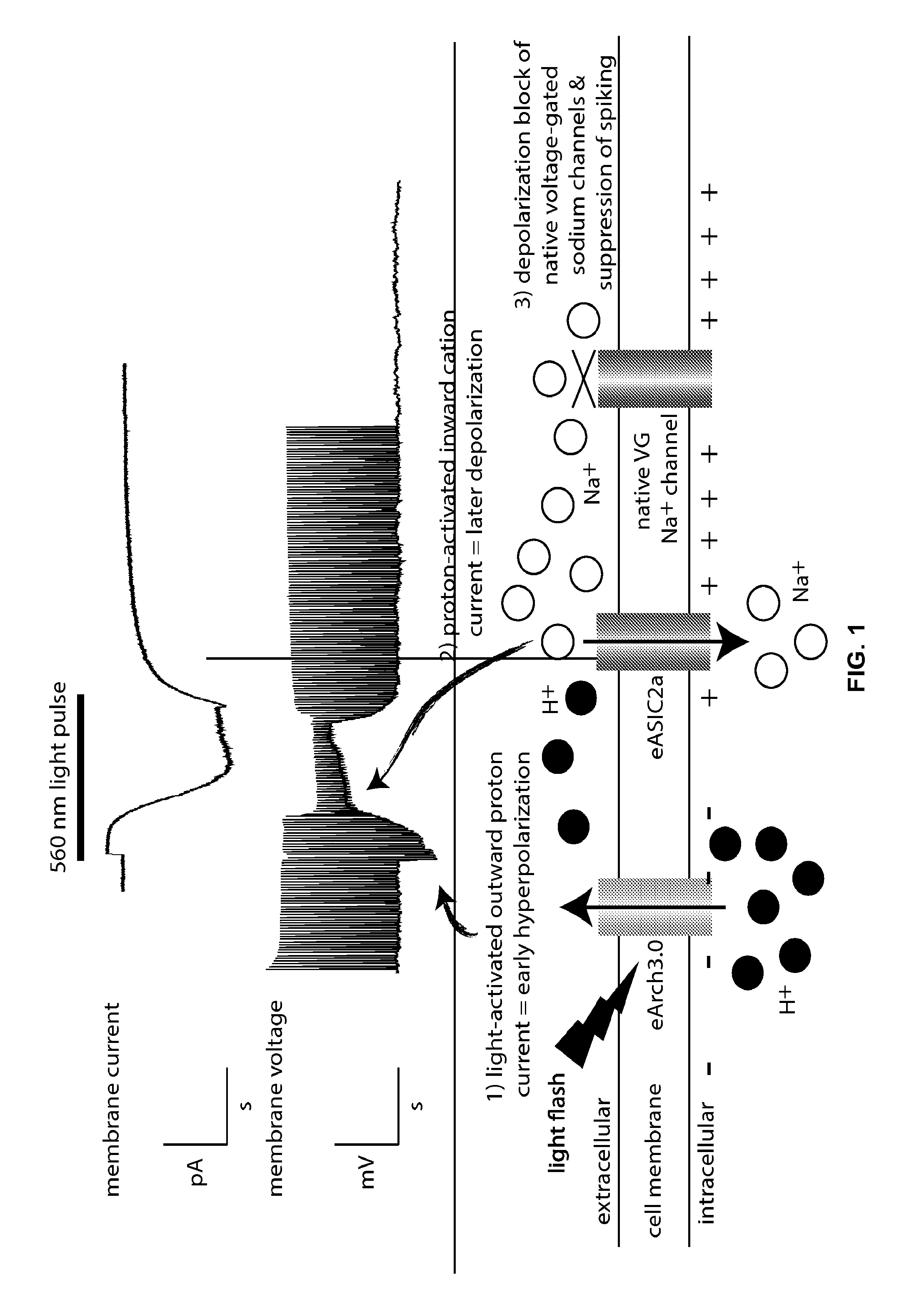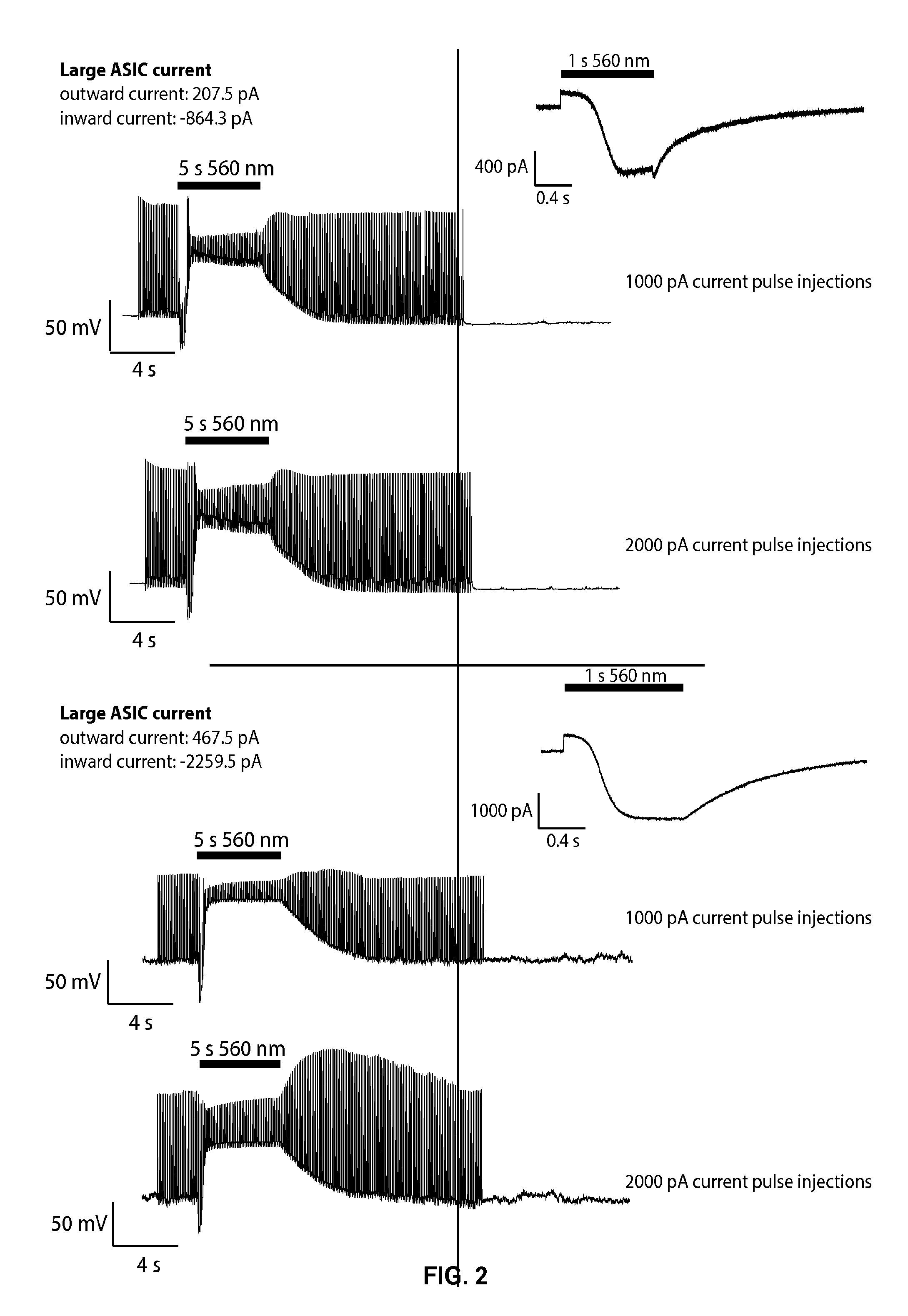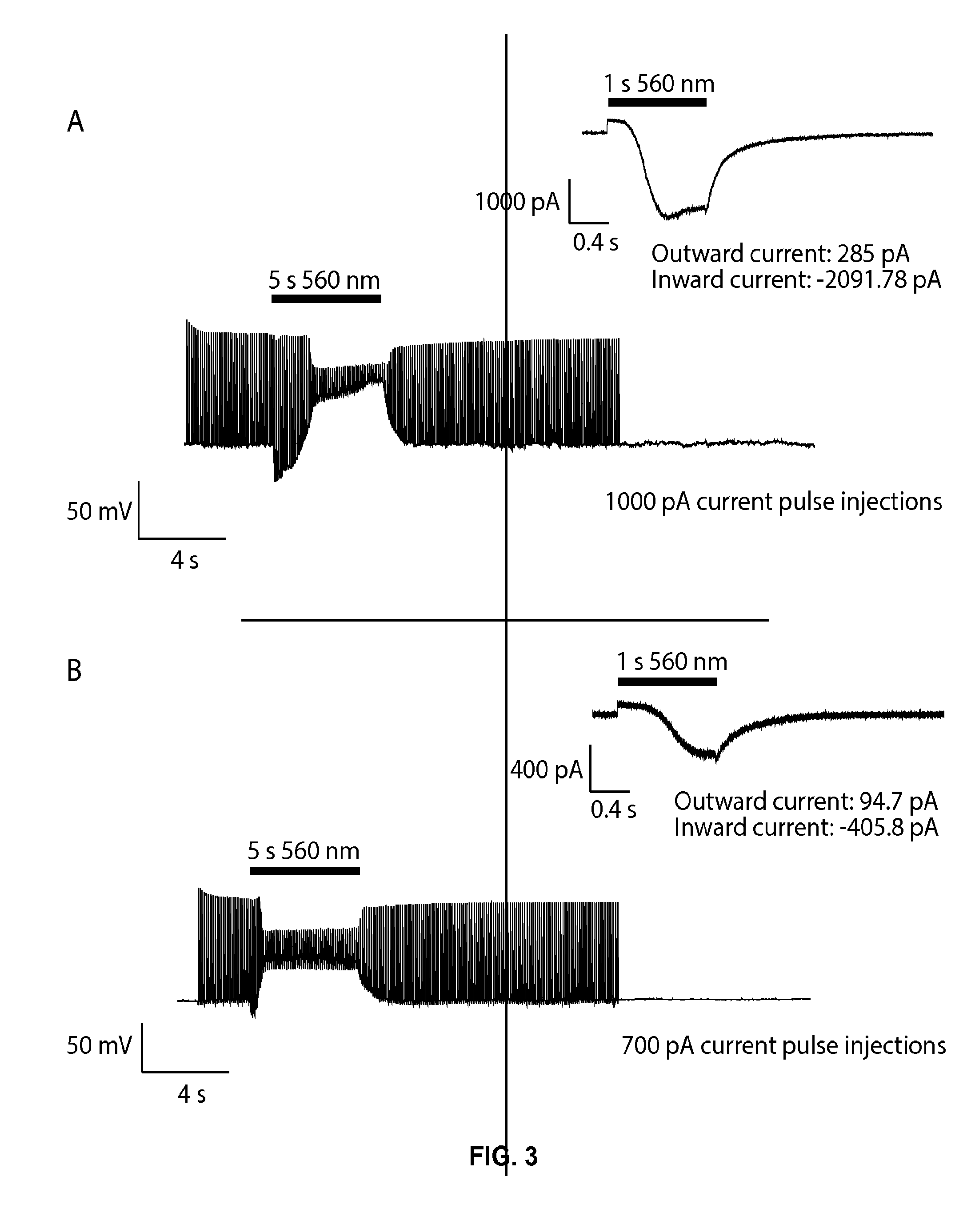Devices, systems and methods for optogenetic modulation of action potentials in target cells
a technology of action potentials and devices, applied in the field of devices, systems and methods for optogenetic modulation of action potentials in target cells, can solve the problems of reducing specificity, relatively weak photocurrent, and optogenetic electrical inhibition, and achieve the effect of facilitating expression of these proteins
- Summary
- Abstract
- Description
- Claims
- Application Information
AI Technical Summary
Benefits of technology
Problems solved by technology
Method used
Image
Examples
example 1
Inhibition of Action Potentials Using eArch3.0 and ASIC2a in a Nerve Cell
[0225]A nerve cell was transfected with a polynucleotide that encodes a light-activated proton pump protein (eArch3.0) and an acid sensing sodium ion channel response protein (ASIC2a). The proteins were expressed in the nerve cell and were present in the plasma membrane of the nerve cell. A pulse of 560 nm light activated eArch3.0, causing a fast outward proton current, resulting in early hyperpolarization of the plasma membrane. The extracellular protons then activated an inward cation current carried by ASIC2a resulting in sustained membrane depolarization and subsequent inactivation of native voltage-gated sodium channels, causing depolarization block and suppression of evoked spiking. Results are shown in FIG. 1.
example 2
Strong Inhibition of Action Potentials Using ASIC2a
[0226]A hippocampal cultured neuron was transfected with a polynucleotide that encodes an acid sensing sodium ion channel response protein (ASIC2a). The protein was expressed in the nerve cell and was present in the plasma membrane of the nerve cell. A 1000 pA current was injected into the cell at 10 Hz, and whole cell patch clamp recordings were collected. In response to the 1000 pA current pulse injections, the outward current component inhibited spiking. During 2000 pA current pulse injections, however, only the depolarization block caused by the ASIC component was sufficient to inhibit spiking. The results are shown in FIG. 2. Insets show the voltage-clamp trace of each cell in response to a 1 second green light pulse.
example 3
ASIC2a-Mediated Inhibition of Action Potentials
[0227]A nerve cell was transfected with a polynucleotide that encodes a light-activated proton pump protein (eArch3.0) and an acid sensing sodium ion channel response protein (ASIC2a). The proteins were expressed in the nerve cell and were present in the plasma membrane of the nerve cell. Spikes were evoked at baseline using suprathreshold (high reliability spiking) current pulse injections at 10 Hz. When light was applied, the eArch3.0-mediated hyperpolarization was insufficient to inhibit spiking, whereas the ASIC2a-mediated depolarization strongly suppressed spiking throughout the remainder of the light pulse, due to depolarization block. The insets to the right show the voltage-clamp response of the same neurons to a 1 second pulse of 560 nm light, with the amplitude of outward and inward currents provided. Results are shown in FIG. 3.
PUM
| Property | Measurement | Unit |
|---|---|---|
| Fraction | aaaaa | aaaaa |
| Fraction | aaaaa | aaaaa |
| Fraction | aaaaa | aaaaa |
Abstract
Description
Claims
Application Information
 Login to View More
Login to View More - R&D
- Intellectual Property
- Life Sciences
- Materials
- Tech Scout
- Unparalleled Data Quality
- Higher Quality Content
- 60% Fewer Hallucinations
Browse by: Latest US Patents, China's latest patents, Technical Efficacy Thesaurus, Application Domain, Technology Topic, Popular Technical Reports.
© 2025 PatSnap. All rights reserved.Legal|Privacy policy|Modern Slavery Act Transparency Statement|Sitemap|About US| Contact US: help@patsnap.com



